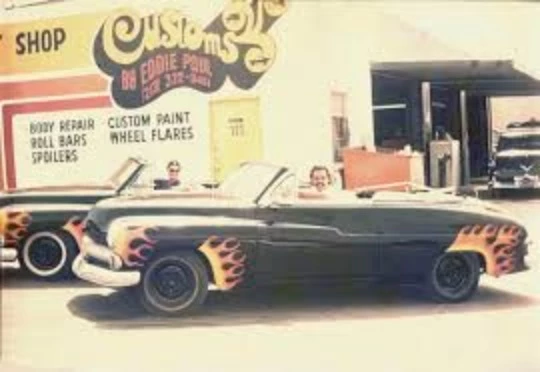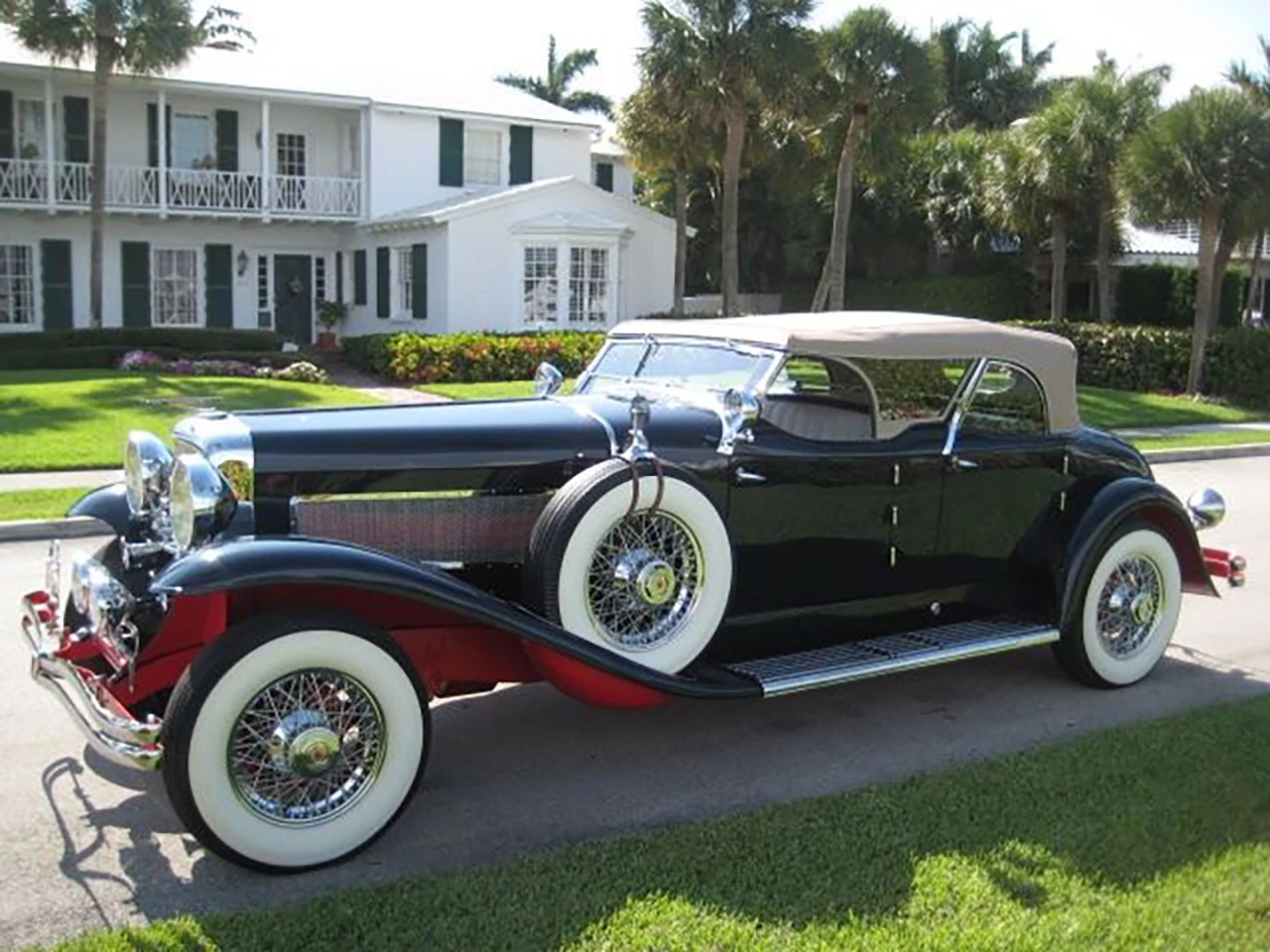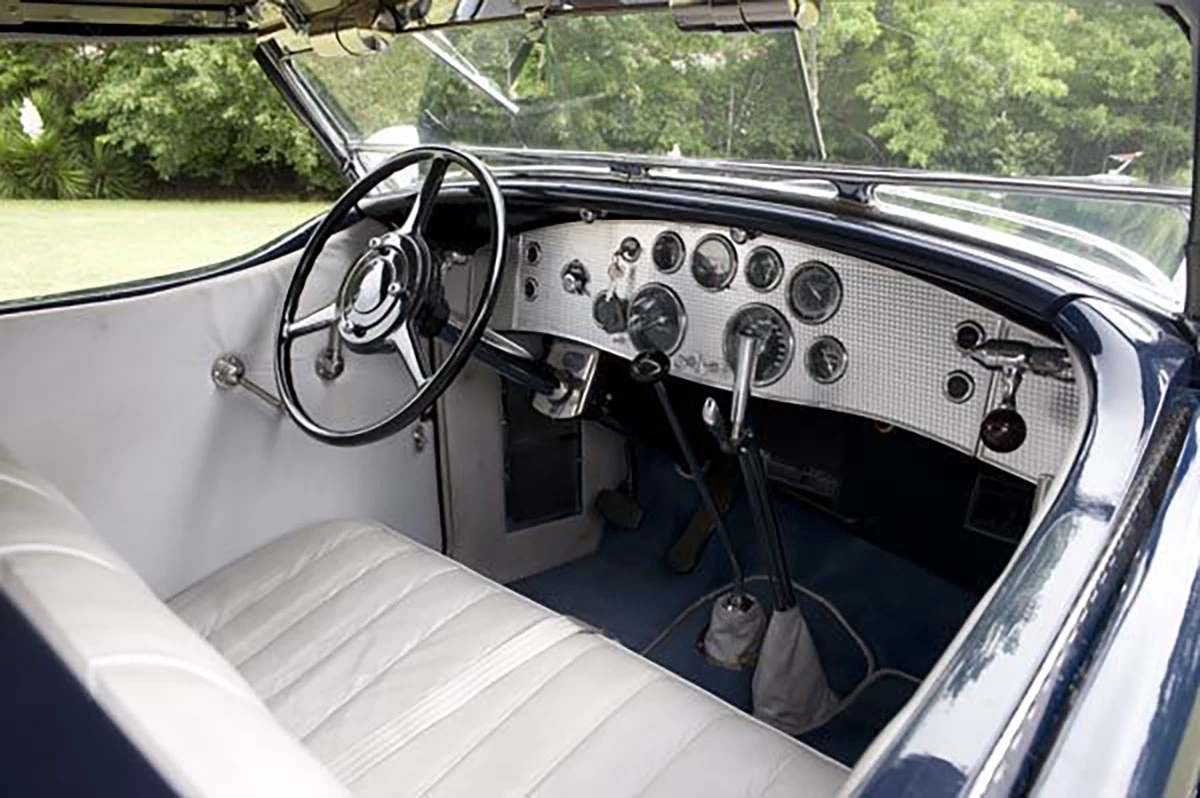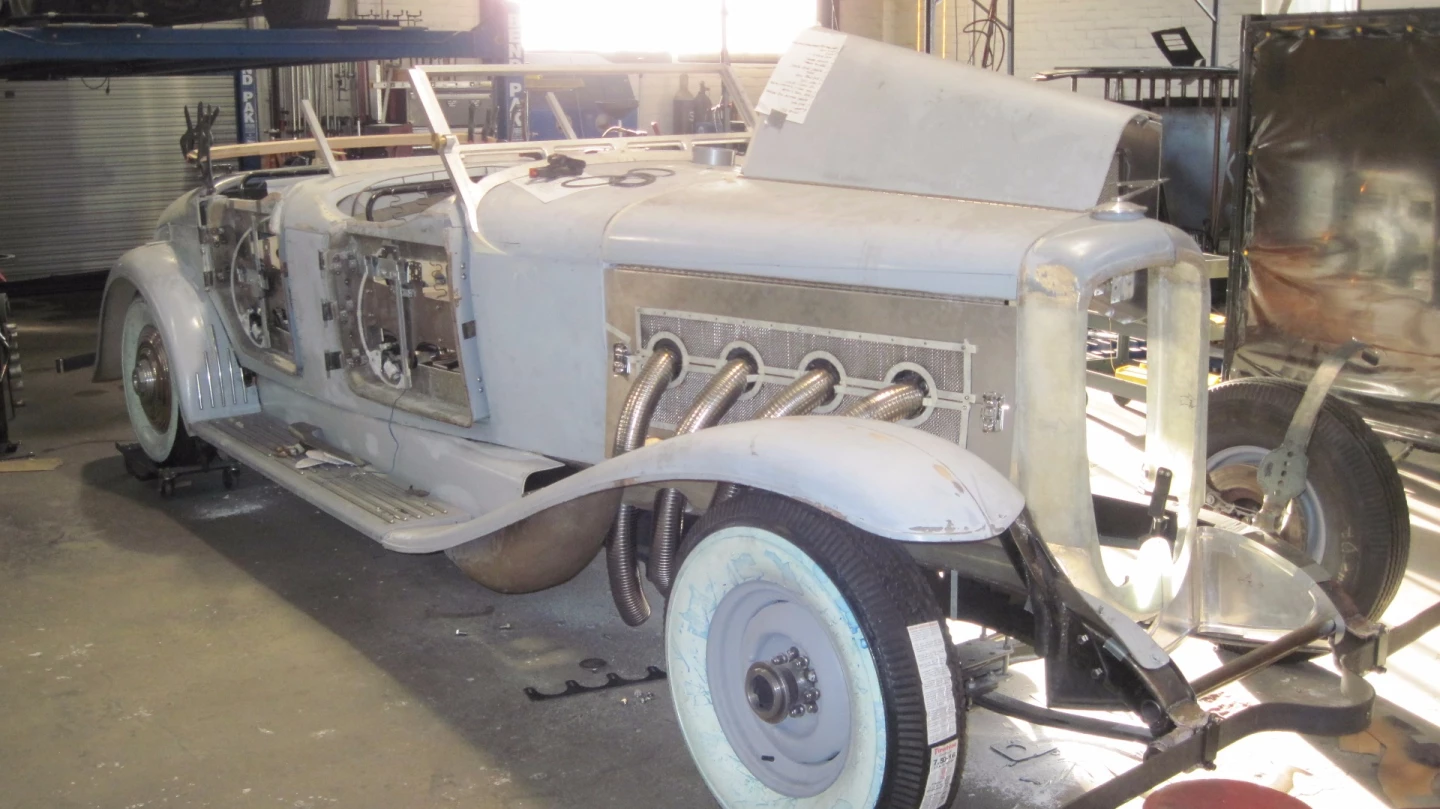After a false start back in 2005, Dave Hartje's plans to revive the Duesenberg luxury car brand are back on track. Instead of reinventing the brand with a futuristic new sportscar concept, the team is getting set to go into production with a series of replicas celebrating the quintessential American luxury cars of the 1920s and 30s. In full control of production this time is Eddie Paul, a remarkable individual we've written about many times before. In the glitz, glamour and rampant fakery of Hollywood, there's a quiet subculture of serious, can-do guys who get things done fast, on time and on budget – and Paul is one of them.
Editor's note: there is an ongoing dispute between Brightcliff Limited and David Hartje regarding his right to use the Duesenberg trademark.
He built the cars for Grease, which I'll admit is enough to get me squealing like a schoolgirl. But that's not to mention all the cars for Fast and the Furious 1 and 2, xXx, Cobra, E.T. and some 60 motorcycles for Streets of Fire – as well as dozens of other movies, TV shows and promo vehicles he's worked on over the last 38 years. He was one of the stunt drivers that jumped the General Lee in the Dukes of Hazzard TV series, as well as dozens of other stunt appearances.

He's also proven himself many times over as an inventor, whether pioneering new 3D filming techniques, or developing new pump designs, or even building mechanical sharks that appear so real and swim so convincingly that not only do they look great on screen, but they've actually fooled other sharks in the wild, and paid the price for it.

In the case of the new Duesy, though, it's back to creating cars – but with one big difference. "[The movie jobs are] always under extreme deadline. The quality doesn't have to be that good, just good enough for a camera that's ten feet back," Paul tells us at his home in El Segundo, California – a house he built himself, of course. "This project is totally different. I'm really looking forward to this, it's a project we can take our time with and make it look perfect. It'll be a nice change."
The 2017 Duesenberg Torpedo Phaeton will be the first off the production line, styled after the 1933 model convertibles. "The top goes up and then hides in the trunk, which is kinda unique," says Paul, "It's called the six-man top, originally because it took six people to put the top up and down. We're gonna redesign that and make it a push-button electric thing."
Paul's previous prototype for a replica Duesenberg was accurate right down to the frame. "On the first one, we built the whole Duesenberg chassis. We used a Mustang engine, but you could put a Duesenberg engine in there and it'd fit right in. I made motor mounts that went from the Duesenberg chassis to the Mustang engine." But the new design will be built on a GM truck chassis, the same used for the Chevy Tahoe and Silverado, using a 6.2-liter V8 LS3 Corvette engine that makes 430 horsepower and 424 ft-lbs of torque. "You'll have something that's warrantied by Chevrolet, that's dependable," says Paul.

Everything from that point upward will be up to Eddie Paul and his team, and reproducing these beautiful cars is made all the more difficult by the fact that they're so rare. No original designs exist to work from, so Paul has been reverse engineering them. "Jay Leno's got, I think six Duesenbergs down there at his garage, he's a friend of mine," Paul tells us. "I'd go down there, he let me measure his chassis and get all the dimensions I needed. But the convertible top, that's a real challenge, because nobody has any information on how they built it. These cars are so rare, Jay doesn't even have one of these. He's got the fixed tops."
Thus, much of the new Duesenberg will come down to Paul's eye for detail and ingenuity. Everything from the steering wheel to the hood ornament, every flowing fender panel, the dashboard, the curved bumpers, the striking supercharger pipes, the cute rear brake lights that light up and say STOP … even the signature spare tire side mounts, they all have to be designed and built from scratch.
Another challenge will be to make a car with classic 1930s style, but some of today's creature comforts. The old car's windows, for example, were hand-crank jobs. The new one will have electric windows, and the old hand cranks will look the same but operate the electric switches to raise and lower the windows. There will be a stereo hidden under the dash, and the body will be a couple of inches wider so passengers aren't "sitting right up against the driver," as Paul puts it. The transmission will probably be automatic, to open the new Duesys up to a broader range of well-heeled buyers.

Duesenberg company owner Dave Hartje has given Paul a generous 12 months to built the first production prototype Torpedo Phaeton, as well as all the tooling, castings and processes for small scale production of about 15 cars per year. That's a far cry from the 2-week turnaround times of the movie business.
Without the need to rush things, Paul is keeping the team lean, mean and personal on this one, and plans to move to Texas to set up a 3,000 square foot workshop where he doesn't have to work under what he sees as restrictive Californian laws: "In California you can't use a plasma cutter, you can't weld, you can't paint ... EPA, OSHA, you name it, they come after you. So I went to Texas ... Texas wants innovators and people who actually build things without all the over the top regulations California has."
In a way, the new Torpedo Phaetons will be the opposite of the original Duesenbergs. Back in the day, the Duesenberg company would build the chassis and engine, and send the cars off to coachbuilders to have the body built on top. The new cars will be Duesenberg bodies on top of a GM chassis and engine.

But while the Duesenbergs of the 1930s were high-tech luxury race cars that were "doing 140 miles an hour when most cars were doing 60," as Paul puts it, the enduring charm that puts them in such demand as museum exhibits and showpieces comes more from their spectacular looks. The Torpedo Phaeton exudes Silver Ghost levels of historic stateliness. It evokes kings and queens of industry, with roomy running boards that could accommodate at least two tommy gun-wielding, Al Capone-era gangsters per side.
The new team at Duesenberg Automotive Company, LLC doesn't want these cars to be museum pieces, the guys want them out on the road, causing whiplash when people see them on the freeway and causing crowds to gather when they're parked. It makes sense to build them on a warrantied platform ... and that LS3 engine should put any performance concerns to bed.
We'll keep an eye on this project as it develops, but as we stated earlier, Eddie Paul has a hard-earned reputation for getting the job done, and now that manufacturing is completely under his control we can expect things to progress rapidly.


























































